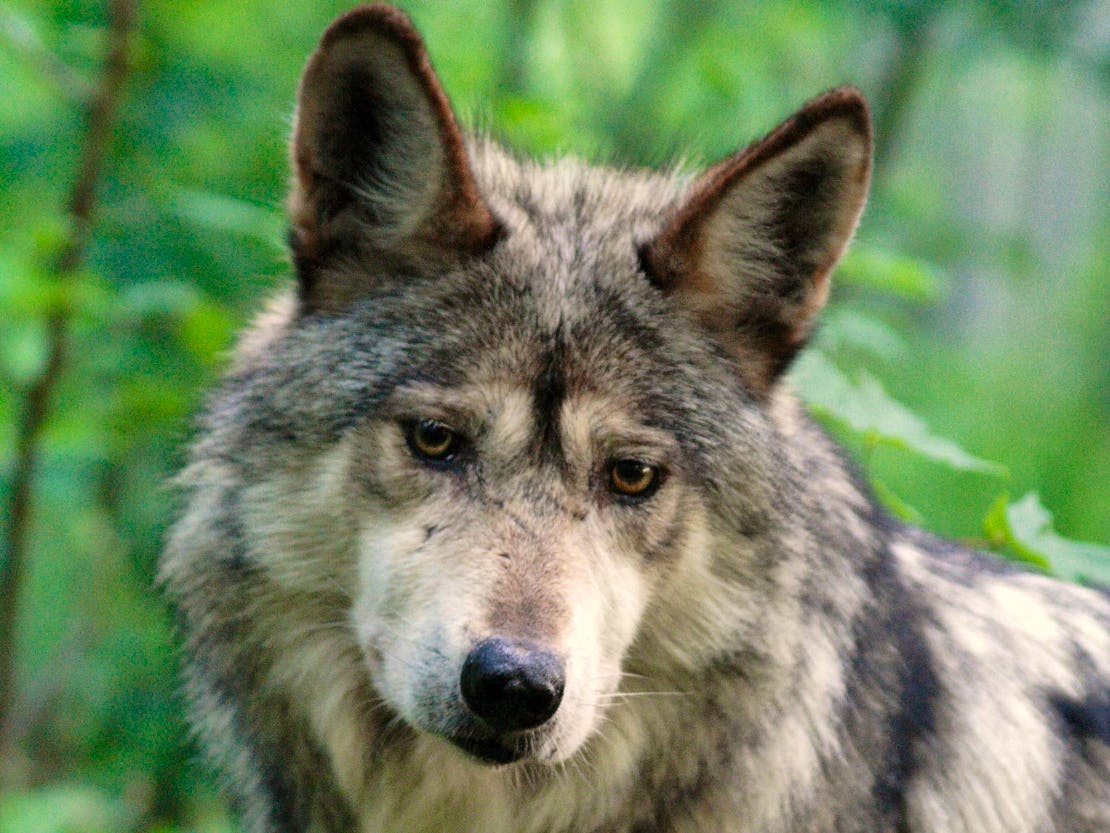Join our mobile Rapid Response Network!
You can be the first to hear about how we’re going to hold the next administration accountable and how you can fight back for wildlife!
The Mexican gray wolf is a subspecies of the gray wolf, commonly referred to as “el lobo.”
Though they once numbered in the thousands, these wolves were wiped out in the U.S. by the mid-1970s, with just a handful existing in zoos. In 1998, the U.S. Fish and Wildlife Service, led by Jamie Rappaport Clark (former president of Defenders of Wildlife), released 11 Mexican gray wolves back into the wild in Arizona.
Although their numbers have grown slowly, they remain the most endangered subspecies of wolf in the world because of compromised genetics, human intolerance and reluctance to release more individuals and bonded pairs to the wild.
Humans pose the greatest threat because of intolerance and misconceptions about Mexican gray wolves. The genetic diversity of Mexican gray wolves also needs careful monitoring and improvement because inbreeding is a serious threat in the wild.

Defenders' Impact
As the population slowly recovers, Defenders continues to support scientists and policymakers to find the best path forward, including supporting adult releases and cross-fostering of pups. We also sponsored a Mexican biologist to come to the U.S. to gain experience working with the recovery team to support wolves in Mexico.
Defenders works directly with ranchers and tribal members to implement proven techniques to keep wolves and livestock safe. These include using range riders to watch over livestock, moving livestock away from wolf dens, erecting special fencing and more.
Defenders supports range rider projects on the ground in high conflict areas to reduce conflict and foster coexistence. Defenders also supports a collaborative wildlife technician program which places trained graduate students in the field for six months at a time to assist with monitoring of wolves and livestock and to implement proven non-lethal tools to reduce conflicts.
You can be a part of the solution for endangered species: support our efforts to protect the wild!
What You Can Do
Speak up for wolves and the continued support of endangered species protections, like the Endangered Species Act.

About
Mexican gray wolves once ranged widely from central Mexico throughout the southwestern U.S. including Utah, Colorado and Texas. Today, they can be found only in southeastern Arizona and southwestern New Mexico. Mexican gray wolves are also being reintroduced in Mexico. They prefer mountain forests, grasslands and scrublands.
In 2019 there were 163 individual wolves in 42 packs of two or more animals in the wild in Arizona and New Mexico.
Mexican gray wolves are very social animals. They live in packs, which are complex social structures that include the breeding adult pair (the alpha male and female) and their offspring. A hierarchy of dominant and subordinate animals within the pack help it to work as a unit.
Packs care for the pups until they mature at about 10 months of age.
Mating Season: Mid-February to mid-March
Gestation: 63 days
Litter size: 4-7 pups
Mexican gray wolves mostly eat ungulates (large hoofed mammals) like elk, white-tailed deer and mule deer. They are also known to eat smaller mammals like javelinas, rabbits, ground squirrels and mice.
Featured
Coexisting with Mexican Gray Wolves
As part of our mission to protect and restore native wildlife and plants in their natural communities, Defenders of Wildlife works to save one of the world’s rarest land mammals, the Mexican Gray Wolf.
News

Defenders, Conservationists Celebrate Female Mexican Gray Wolf Movement











